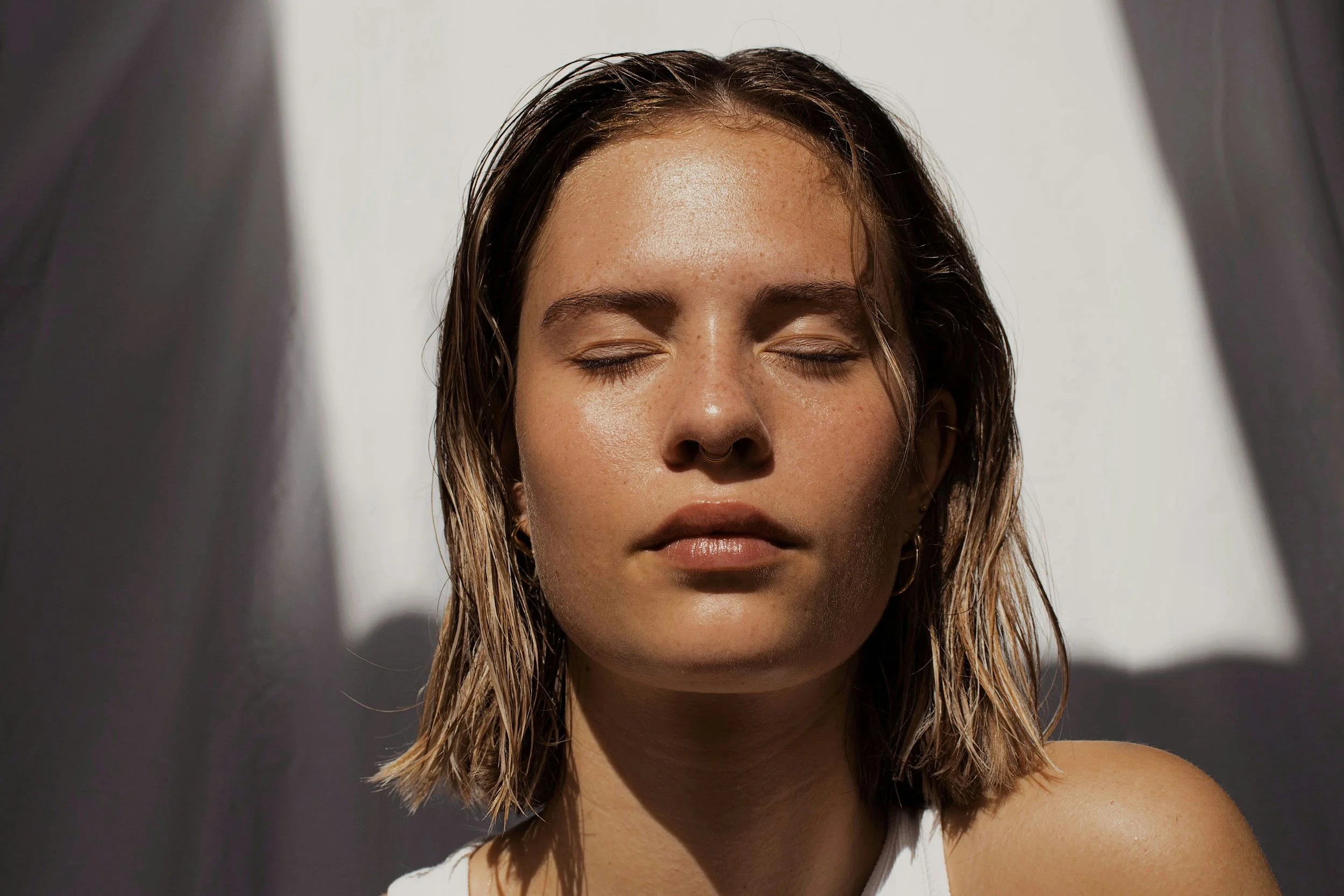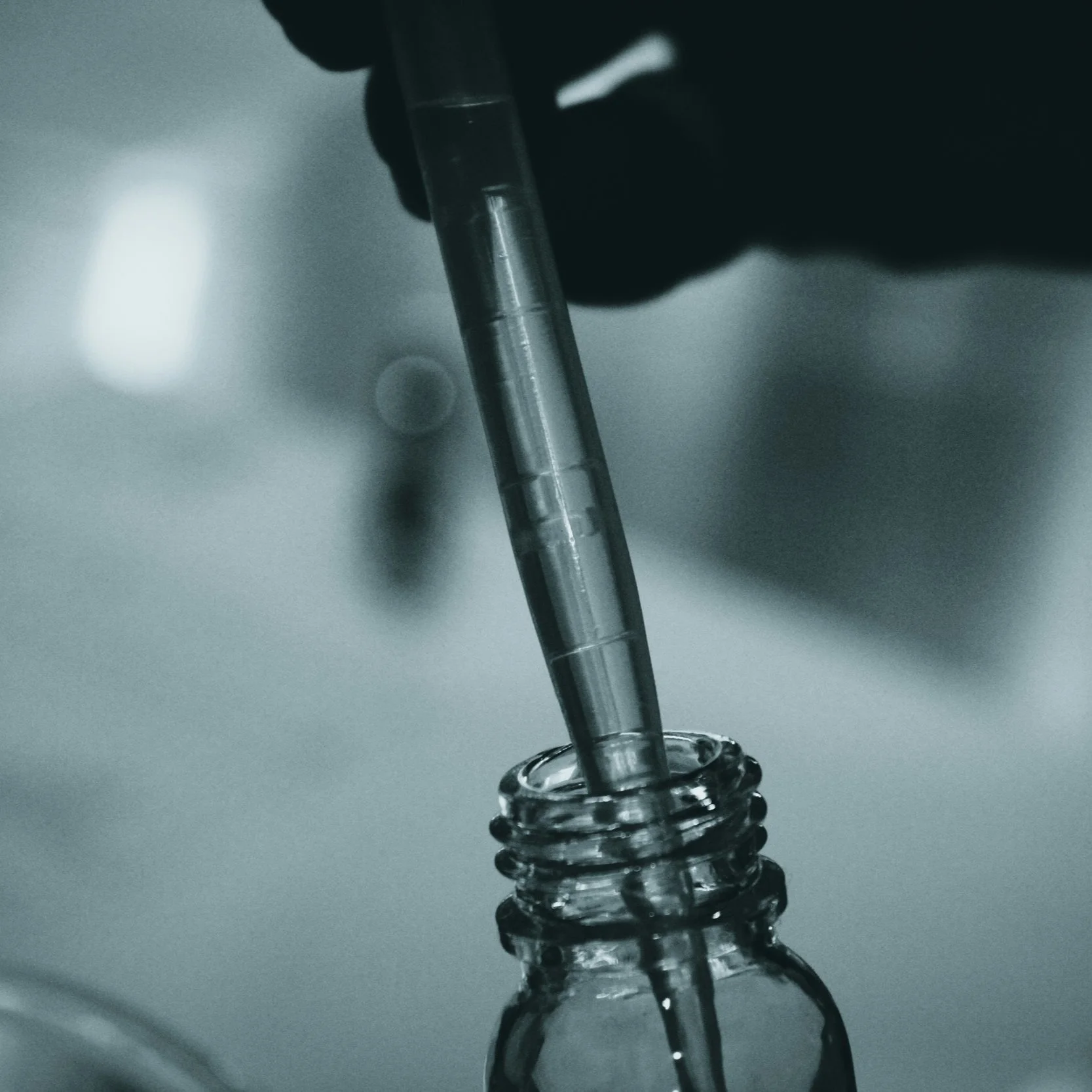Toxic Sunscreen Ingredients & Best Low-Tox Swaps for Summer
We’ve all been told that sunscreen is essential to taking care of our skin, especially during the summer months. And for good reason: protecting your skin from UV damage is smart, necessary, and an act of long-term self-care. But what if some sunscreens do more harm than good?
That was the question I started asking as I became more ingredient-aware. Today, I’m sharing a breakdown of toxic sunscreen ingredients, explaining what they do in the body, how they may impact your health in the long term, and how to choose safer sun protection when needed. Because yes, sunburns are damaging—but so is slathering on a chemical cocktail without knowing what you’re absorbing.
Toxic Sunscreen Ingredients
Popular sunscreens have been flagged for their potential impact on human health. In fact, multiple studies (including one published by the Food and Drug Administration) show that several common active ingredients in chemical sunscreens are absorbed into the bloodstream at levels that warrant further testing. These include ingredients like oxybenzone, avobenzone, octocrylene, and homosalate, which are found in 45% of sunscreens found on store shelves.
These aren’t just sitting on top of your skin—they’re going deep. Some are endocrine disruptors, meaning they mess with your hormone function, and have been found transferred into breast milk, urine, and blood plasma. That matters—a lot.
Is Sunscreen Toxic?
It’s time to peel back the label. Sunscreen itself isn’t toxic. But some of the ingredients in it? Worth a second look.
According to the Environmental Working Group (EWG), the FDA currently allows 16 active sunscreen ingredients—but only two are officially classified as "safe and effective" (GRAS):
Zinc Oxide & Titanium Dioxide
These are mineral-based (a.k.a. physical) blockers that sit on top of the skin and reflect UV rays instead of being absorbed. They’re ideal for sensitive skin, developing bodies, and parents who read labels.
What Are The Toxic Ingredients In Sunscreen?
Oxybenzone
Purpose: UVB and UVA filter
Concerns: Hormone disruption, allergic reactions, possible impact on fetal development.
Found in breast milk and urine.
Status: Not classified as safe and effective by the FDA
Avobenzone
Purpose: UVA filter
Concerns: Unstable in sunlight unless mixed with other chemicals. Linked to irritation and oxidative stress.
Octocrylene
Purpose: UVB absorber and avobenzone stabilizer
Concerns: Often contaminated with benzophenone, a possible carcinogen. Accumulates in the body and environment.
Homosalate
Purpose: UVB absorber
Concerns: Disrupts estrogen, androgen, and progesterone signaling in lab studies.
Octinoxate
Purpose: UVB filter
Concerns: Hormone disruptor, common allergen, and toxic to coral reefs.
What Ingredients To Look For In Sunscreen
Now for the good stuff! Zinc oxide and titanium dioxide offer broad-spectrum protection without being absorbed into the bloodstream.
Zinc Oxide
Type: Mineral blocker (physical sunscreen)
Benefits: Covers UVA and UVB, doesn’t irritate sensitive skin
EWG Rating: 1–2 (low hazard)
Titanium Dioxide
Type: Mineral UVB blocker
Benefits: Pairs well with zinc for full spectrum protection, low allergy risk
EWG Rating: 1–3 (depending on formula)
What Is The Best Non Toxic Sunscreen?
These are Nontoxxish-approved picks for 2025: Low on the EWG hazard scale, high on burn protection, and made with ingredients that support skin, not cause systemic disruption. Listed from lightest, most makeup-friendly to thicker, water-resistant formulas:
Primally Pure Natural Sunscreen SPF 30
Editor’s Pick
Key Ingredients: Non-nano zinc oxide, tallow, jojoba oil, shea butter
Pros: Nutrient dense, synthetic fragrance-free, chemical-free, fast-absorbing
Cons: Tallow-based (if you are only looking for vegan options) and a higher price point
EWG Rating: 1
Supergoop! Zincscreen 100% Mineral Lotion SPF 40
Editor’s Pick
Key Ingredients: Zinc oxide, blueberry extract, winter cherry
Pros: Lightweight and sheer, wears beautifully under makeup, easy to apply on kids
Cons: Higher price point
EWG Rating: 1–2
Mad Hippie Daily Protective Serum SPF 30
Editor’s Pick
Key Ingredients: Zinc oxide, red raspberry seed oil, vitamin C & E
Pros: Antioxidant-rich, dewy finish, perfect for everyday wear
Cons: Lower SPF, not water-resistant
EWG Rating: 1
Babo Botanicals Clear Zinc SPF 30
Key Ingredients: Zinc oxide, calendula, chamomile
Pros: Soothing botanicals, pediatrician approved
Cons: Slightly sticky on humid days
EWG Rating: 1
Blue Lizard Sensitive Mineral Sunscreen SPF 30
Key Ingredients: Zinc oxide, titanium dioxide
Pros: Dermatologist recommended, rubs in better than most mineral SPFs
Cons: Slight residue on darker skin
EWG Rating: 2
Goddess Garden Mineral Sunscreen SPF 30
Key Ingredients: Zinc oxide, aloe vera, coconut oil
Pros: Easy to apply, family-friendly
Cons: Slightly oily finish on the face
EWG Rating: 2
ATTITUDE Mineral Sunscreen SPF 30
Key Ingredients: Non-nano zinc oxide, coconut oil, shea butter
Pros: Vegan, fragrance-free, family-safe
Cons: Can feel heavy on oily/acne-prone skin
EWG Rating: 1
Thinksport Kids Safe Sunscreen SPF 50+
Key Ingredients: Non-nano zinc oxide, sunflower seed oil, vitamin E
Pros: High SPF, water-resistant (80 min), toddler-safe
Cons: Thick texture takes time to rub in
EWG Rating: 1
Sky & Sol Face & Body Sunscreen SPF 30 & 50
Key Ingredients: Grass-fed tallow, jojoba oil, beeswax, lecithin, vitamin E, non-nano zinc oxide (25%)
Pros: Food-grade, handmade, no synthetic ingredients
Cons: Thick balm texture, not vegan
EWG Rating: 1
Soleo Organics Mineral Sunscreen SPF 30
Key Ingredients: All-natural zinc oxide, botanical extracts, beeswax
Pros: Hypoallergenic, fragrance-free, safe for the whole family
Cons: Slightly oily feel, can be harder to find
EWG Rating: 1
How to Get the Benefits of the Sun Without the Burn
This is where I align with wellness thinkers like Darin Olien in that the sun is not the enemy. If you're not already familiar with his work, he promotes functional foods, toxin-free living, and ancestral health practices, often blending science with natural remedies in an approachable, California-cool kind of way.
Our bodies need sunlight to:
Produce vitamin D (supports mood, immunity, and bone health)
Trigger nitric oxide (helps lower blood pressure)
Regulate hormones and circadian rhythm
Here’s how we use the sun wisely:
For small amounts of sun exposure, ditch the sunscreen altogether. Use care not to burn.
Use hats, shade, and UPF clothing as your first defense
Opt for mineral sunscreen when needed, especially midday
Conscious Sun Care Can Be Easy
You don’t have to fear the sun—or sunscreen. But you do deserve to know what you’re putting on your skin and your kids’ skin. And remember, the sun is vital for our health. Try to spend at least 15 minutes in the sun each day.
Choose products that support your health, your hormones, and your lifestyle. Check EWG’s Skin Deep Database when in doubt, and trust your gut when something doesn’t feel right.
Protecting your family from sunburn shouldn’t mean compromising their long-term health. With a little awareness and the right bottle, you can do both.





